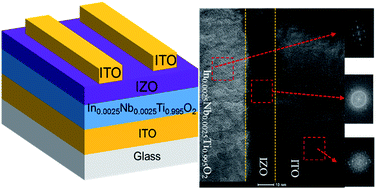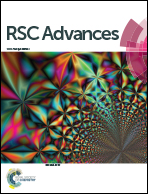Approaching subthreshold-swing limit for thin-film transistors by using a giant-dielectric-constant gate dielectric†
Abstract
Low-temperature giant-dielectric-constant thin films (In0.0025Nb0.0025Ti0.995O2) fabricated with simple radio frequency (RF) sputtering on glass substrates are employed as the gate dielectrics for thin-film transistors (TFTs) for the first time. The 380 nm-thick In0.0025Nb0.0025Ti0.995O2 film exhibited a quasi-static capacitance of as high as 36 156 nF cm−2 with a quasi-static permittivity of 15 525 (and 7607 nF cm−2 at 1 kHz). Indium zinc oxide (IZO) TFTs with In0.0025Nb0.0025Ti0.995O2 gate dielectrics exhibited high output current at low operation voltage and little hysteresis in the transfer curves between forward and reverse sweeps. The subthreshold swing (SS) of the IZO TFTs is 0.068 V dec−1, very close to the lowest limit of the SS of the field-effect transistors (0.06 V dec−1). The results also proves that the lowest limit of the SS (0.06 V dec−1) cannot be broken no matter how high the gate dielectric capacitance is (except for negative capacitors). The TFTs demonstrate the potential for the applications in low-power circuits or flat-panel displays.



 Please wait while we load your content...
Please wait while we load your content...